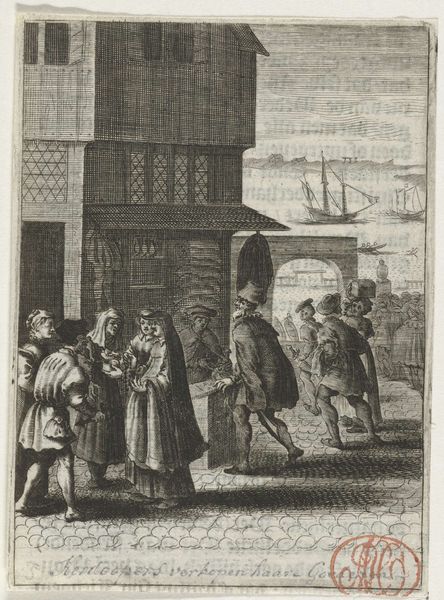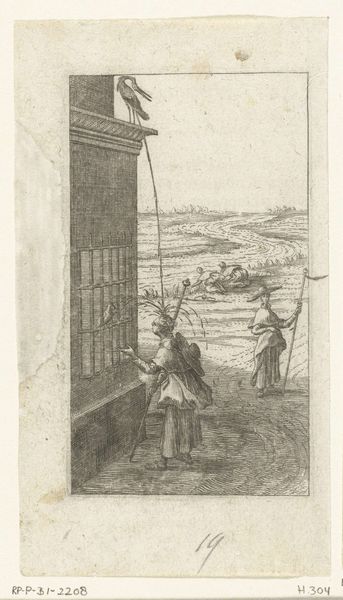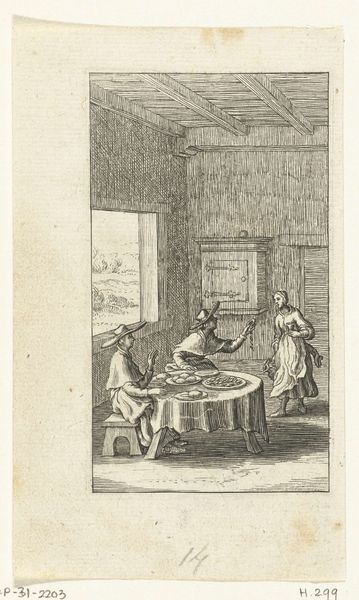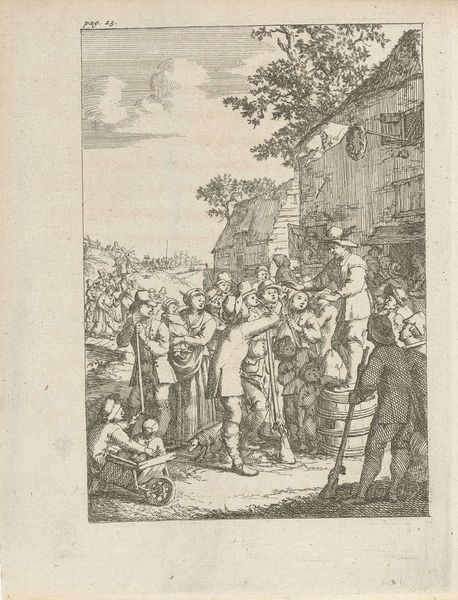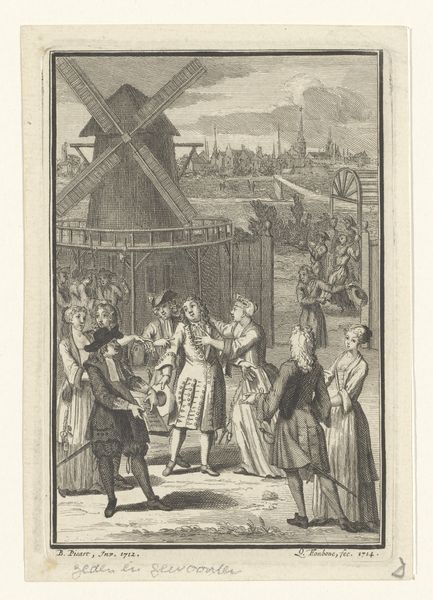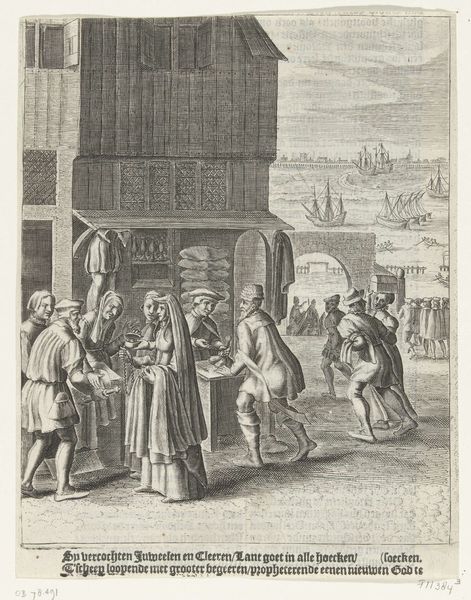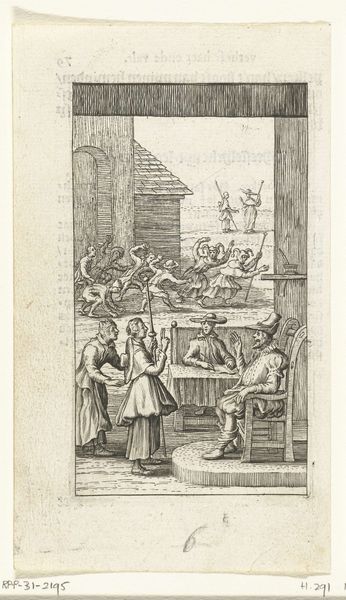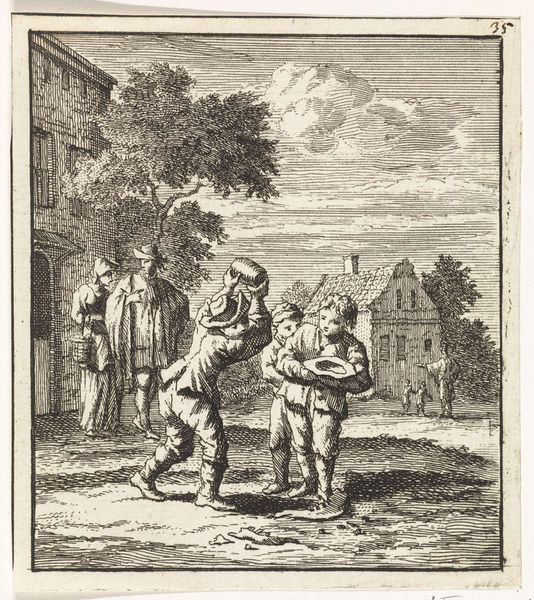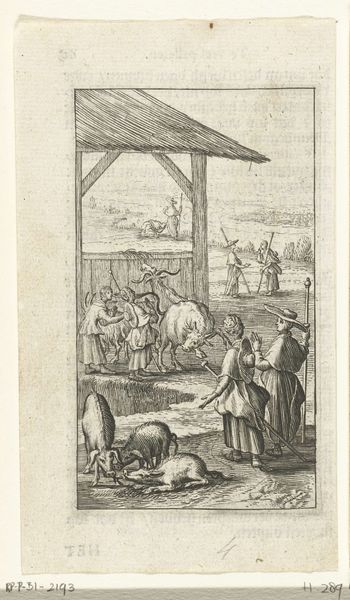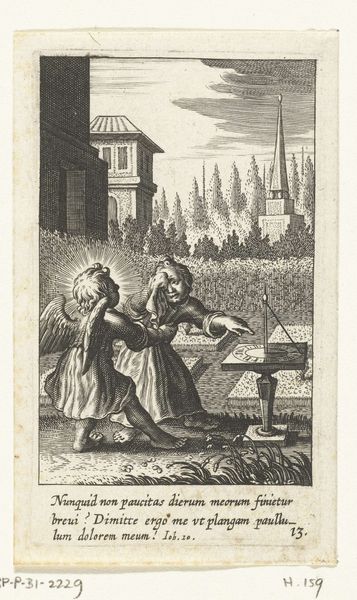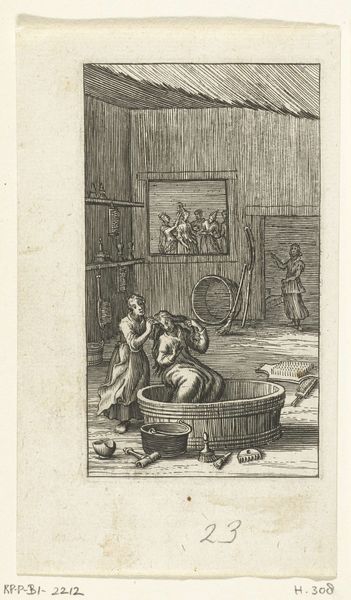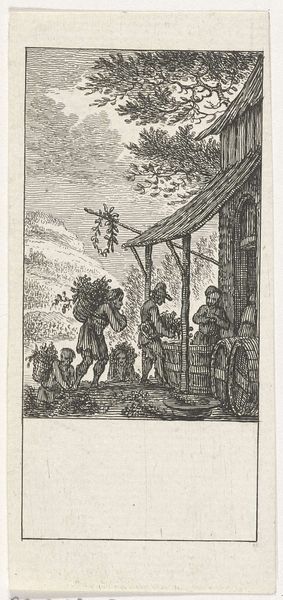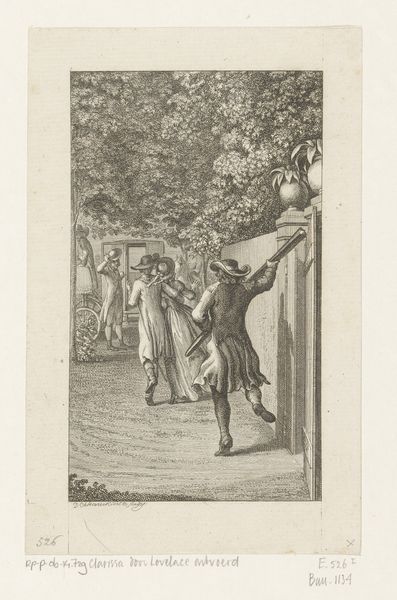
Willemynken en bedelende oude vrouw voor herberg 1590 - 1638
0:00
0:00
print, metal, engraving
#
narrative-art
#
baroque
#
dutch-golden-age
# print
#
metal
#
figuration
#
line
#
cityscape
#
genre-painting
#
engraving
Dimensions: height 113 mm, width 65 mm
Copyright: Rijks Museum: Open Domain
Editor: We’re looking at “Willemynken en bedelende oude vrouw voor herberg,” a print made between 1590 and 1638, currently held at the Rijksmuseum, and created by Boëtius Adamsz. Bolswert. There’s something deeply sad about this interaction depicted. An elderly woman appears to be begging outside an inn. What social dynamics do you see at play here? Curator: This piece offers a window into the societal structures of the Dutch Golden Age. Notice how the engraving depicts not just a genre scene but also power dynamics. The “herberg,” or inn, wasn't simply a place for refreshment, it was often a locus for community and commerce, and even political negotiation. To beg outside it was to be at the very edge of the social and economic life of the community. The very act of depicting that marginalization normalizes it. How might the placement of this work—say, in a wealthy merchant’s home—reinforce existing power structures? Editor: That's a striking perspective. The contrast between the haves and have-nots becomes starker when considering its display context. Is there a commentary about charity being made? Curator: The image indeed opens up questions about the role of charity, but we should be cautious of a simple reading. Instead, consider what it says about the public performance of piety, the visual reinforcement of social hierarchy, and how even seemingly 'humanitarian' acts served to reinforce social norms rather than challenge fundamental inequalities. Note, too, how neatly composed and delineated this scene is - everything is under control in this miniature representation of the world. It perhaps says less about real suffering and more about the need for a stable social order. Editor: So, less a critique of the system, and more a reflection of its ingrained nature? That reframes the way I initially interpreted the piece significantly. Curator: Precisely. We need to think about art not just as reflection, but as an active participant in the construction of social and political meaning. Editor: I’ll certainly remember to look beyond face value and dig into the context next time. Thank you!
Comments
No comments
Be the first to comment and join the conversation on the ultimate creative platform.
